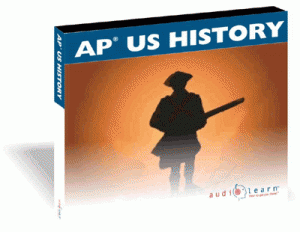 Last year our school district had to cut $11 million dollars, this meant pay cuts and freezes, and jobs. This year we have been informed that due to loss of tax revenue we will have to see another $10 million or so in cuts. This will be the beginning of even more serious cuts. On the table is pretty much everything, from busing to job cuts, and more pay cuts. Our Department Chair informed me that United States AP History could be among those classes that in the future could be gone, why? Well, last year I went from 24 students to a final 12 who finished to take the examine, and this year from 26 to 14 as it stands now. According to administration, due to need to increase class sizes (and I presume reduce teachers) we will have to utilize resources and a room that holds 32 only serving 12-14 does not represent the best use of resources. It was suggested that if I could maintain my numbers into the mid-20s I would most likely keep the class. [Note: all Social Studies AP classes on the possible chopping block.]
Last year our school district had to cut $11 million dollars, this meant pay cuts and freezes, and jobs. This year we have been informed that due to loss of tax revenue we will have to see another $10 million or so in cuts. This will be the beginning of even more serious cuts. On the table is pretty much everything, from busing to job cuts, and more pay cuts. Our Department Chair informed me that United States AP History could be among those classes that in the future could be gone, why? Well, last year I went from 24 students to a final 12 who finished to take the examine, and this year from 26 to 14 as it stands now. According to administration, due to need to increase class sizes (and I presume reduce teachers) we will have to utilize resources and a room that holds 32 only serving 12-14 does not represent the best use of resources. It was suggested that if I could maintain my numbers into the mid-20s I would most likely keep the class. [Note: all Social Studies AP classes on the possible chopping block.]
Why do the numbers decline? The workload is demanding and the material is significant and complex. I end up with the best, the cream of the crop. Thus, do I reduce the work load, decrease the expectations, and essentially dumb down the class in order to keep the numbers and essentially the class? [Note: nothing has been finalized and all this may never materialize, but nonetheless it has been brought to my attention.]
I have to admit I am perplexed. Last year I had almost 50% scores of 5, if I reduce the quality of the class, do I risk a lower average of scores and then a critical review of my teaching? The goal has always been the AP exam, which I do admit is also problematic. However, as a public school parents expect us to get their student ready for that exam. It is a demanding proposition.
I have to admit that maybe this is an opportunity to make the class more inclusive and accessible, but I fear that I do a disservice to those students who want the challenge and want to be among what they see as an elite group of students of history. I don’t want to lose that either.
How to (and who to) teach APUSH is quite a problem. I have been doing it for a decade and thinking that if I limit enrollment then I could do more for fewer but better prepared students or I could open it up more and challenge and prepare more students but at a lower level. My class does have a reputation as requiring more work than they have done before, so my enrollment numbers have been down. Unfortunately that keeps out both students who should take the class and students who should not take AP.
In the end, I have opened my class more than I should have and motivation and discussion has been negatively affected. The top quality students (maybe 5 of my current 19) have been short changed a little, but the other students are being challenged and are maturing as students. I think I will take my 3.5 average on the AP exam knowing that I have helped more kids.
You have an interesting problem that many have had to endure. Good luck with it.
We have seen increasing numbers in our AP classes, yet our scores are still pretty good. Talk with your administration a out your fears. You also need to decide as a Dept what your goal should be in your AP courses-super high scores or more inclusive courses with the goal of all students scoring a 3 or better. AP courses are high-stakes test courses, and you teach students how to take the test.
Rob & Tom thanks much for commenting and offering some advice. I probably will end up going down the road you have and I hope it works out as well.